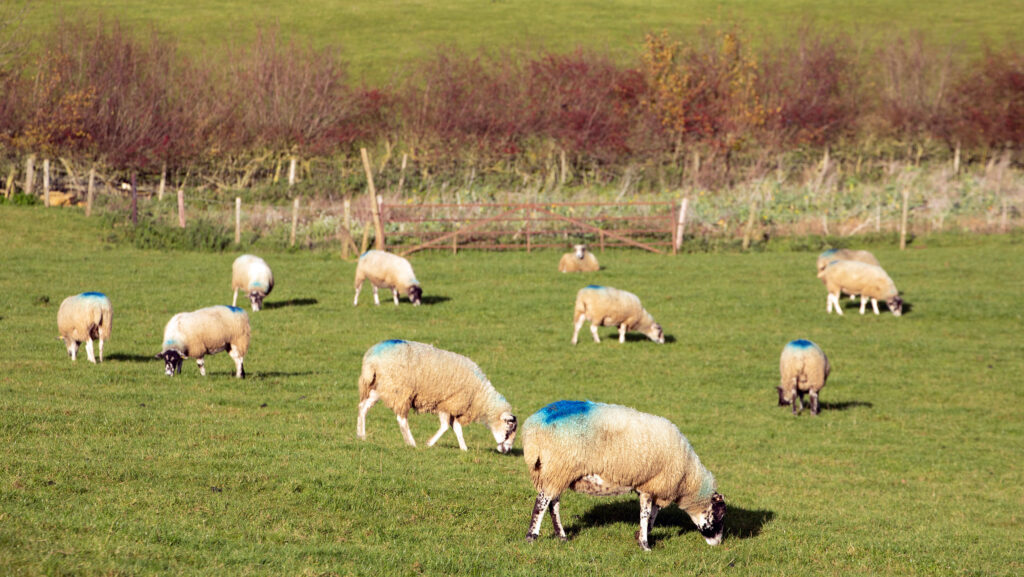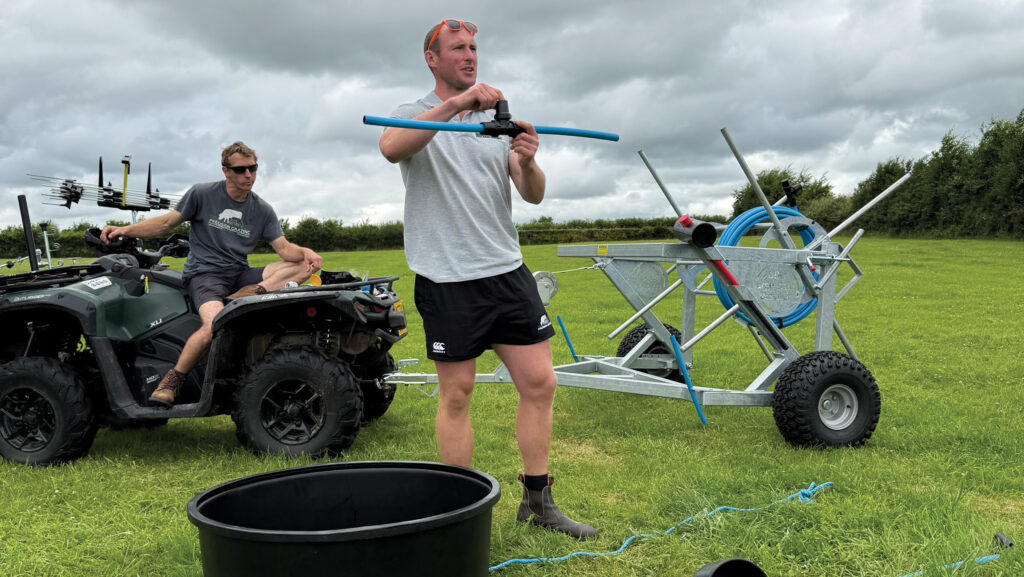Advice on managing mobile water troughs for sheep flocks
 ©Tim Scrivener
©Tim Scrivener As temperatures rise and rotational grazing becomes more widespread, getting water to livestock efficiently is a must.
Mobile water systems can help sheep farmers overcome the challenge of providing a reliable supply across multiple paddocks.
At the recent NSA Sheep South West event, Farmers and advisers demonstrated a range of mobile troughs, pumps and piping setups that are helping make rotational grazing more productive and practical.
See also: How to set up electric fencing to optimise grazing
Why water placement matters
Poor access to water limits grazing management options, especially when fields are split into smaller paddocks.
A trough in the wrong place can stop stock grazing evenly across a paddock, affect regrowth and reduce utilisation.

James Daniel © Charlotte Cunningham
“Water is often the first issue we deal with on farms starting out with rotational grazing,” says James Daniel of Precision Grazing, who led the demonstration.
“If we can solve that, it opens the door to a lot more flexibility in how stock are moved.”
A ewe in peak lactation during hot weather can drink up to 10 litres of water a day. “That’s a big demand on a system if you don’t have enough flow,” he adds.
Benefits of mobile troughs
Unlike fixed systems, mobile troughs can be moved easily and serve individual groups of animals in fields subdivided into paddocks and grazing cells.
For example, Kiwitech’s mobile trough can holds 100 litres and is suitable for sheep or cattle. A smaller version – the “micro-trough” – is for cattle only, as it relies on the stock pushing a valve plate to release water.
James says the preference among many of his clients is to run one mobile trough for each stock group, rather than fitting a fixed trough in every paddock.
This allows troughs to move with the stock, simplifying subdivision and saving on kit.
Chris Berry, who farms near Exeter, says this approach works well for him on his mixed beef and sheep enterprise.
“You don’t need dozens of troughs. All we need is one trough per group – four grazing groups, four troughs, and a couple of spares. They’re easy to move with a quad and simple to connect with quick-release fittings.”
The troughs are durable too – sturdy enough for cattle, but low enough that lambs will not drown, adds Chris.
“They also help avoid worm burdens and fertility hotspots by distributing dung more evenly, rather than concentrating it around a fixed watering point.”

© Charlotte Cunningham
Pipe sizing and flow rates
Water flow rate is the linchpin of any mobile watering system. If troughs cannot fill quickly enough, livestock will start pushing and tipping them, causing damage and stress.
Pipe size is the main factor controlling flow – and many systems fail by undersizing this, notes James.
For sheep, 25mm pipe is often the minimum, especially when more than 100 animals are drinking.
Larger setups – like those running 1,000 ewes and 100 cattle – may require 50mm mains or gravity-fed systems to maintain sufficient pressure and flow.
James advises testing flow by timing how long it takes to fill a bucket from a water pipe.
“If you get 2 litres in under a minute, you’re fine for about 100 ewes or 10 cows. Any slower and you’ll struggle during peak demand.”
Pumps and off-grid solutions
Solar pumps can be used successfully where mains water is not an option.
Mixed farmer Sam Tarr, who farms on Exmoor, says he converted silage fields to grazing by installing solar-powered pumps to lift water to the highest point of the farm.
From there, gravity-fed pipes distribute water to troughs across the holding.
The pumps are robust and mobile, making them a great match for winter grazing or rented blocks where permanent infrastructure is not financially viable.
“It’s transformed how we use those fields,” says Sam.
Top tips for successful watering
- Plan your flow rate: Work backwards from livestock demand – 100 ewes need around 2 litres/minute.
- Size your pipe correctly: Don’t skimp – 25mm is a good minimum, and larger systems may need up to 50mm.
- Use quick-release connectors: These are cost-effective solutions that allow mobile troughs to be quickly moved and repositioned.
- Check for leaks daily: A basic inline flow meter can flag any overnight issues with joints or troughs.
- Match the trough to the stock: Spike troughs are great for cows, while wider, lower troughs suit mixed groups of livestock.
- Ensure compliance: Consult with local water authorities regarding regulations to ensure all systems are compliant.
The NSA Sheep South West event was held at Weston Farm, East Knowstone, Devon on 25 June 2025
